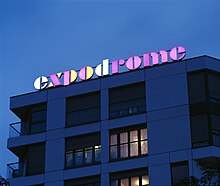
The Centre Pompidou, more fully the Centre national d'art et de culture Georges-Pompidou, also known as the Pompidou Centre in English, is a complex building in the Beaubourg area of the 4th arrondissement of Paris, near Les Halles, rue Montorgueil, and the Marais. It was designed in the style of high-tech architecture by the architectural team of Richard Rogers, Su Rogers and Renzo Piano, along with Gianfranco Franchini.
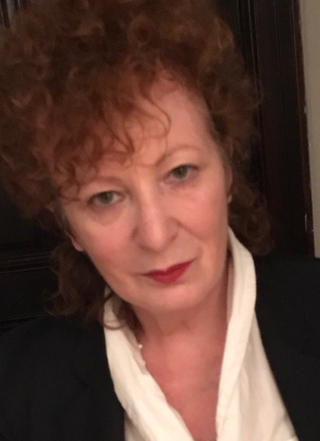
Nancy Goldin is an American photographer and activist. Her work explores in snapshot-style the emotions of the individual, in intimate relationships, and the bohemian LGBT subcultural communities, especially dealing with the devastating HIV/AIDS crisis of the 1980s. Her most notable work is The Ballad of Sexual Dependency. In the slideshow and monograph (1986) Goldin portrayed her chosen "family", meanwhile documenting the post-punk and gay subcultures. She is a founding member of the advocacy group P.A.I.N. against the opioid epidemic. She lives and works in New York City.
Pierre Huyghe is a French contemporary artist, who works in a variety of media from films and sculptures to public interventions and living systems. He lives and works in Paris and New York.

Angela Bulloch, is a Canadian artist who often works with sound and installation; she is recognised as one of the Young British Artists. Bulloch lives and works in Berlin.

Dorothea Margaret Tanning was an American painter, printmaker, sculptor, writer, and poet. Her early work was influenced by Surrealism.

Rebecca Horn was a German visual artist best known for her installation art, film directing and body modifications such as Einhorn (Unicorn), a body-suit with a very large horn projecting vertically from the headpiece. While living in Paris and Berlin, she worked in film, sculpture and performance, directing the films Der Eintänzer (1978), La ferdinanda: Sonate für eine Medici-Villa (1982) and Buster's Bedroom (1990).
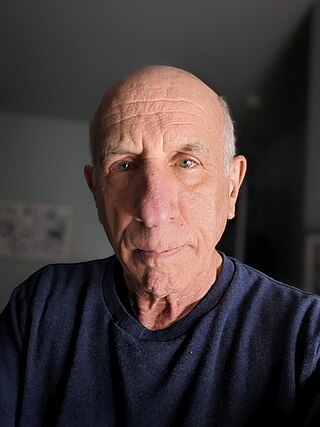
Kenneth Feingold is a contemporary American artist based in New York City. He has been exhibiting his work in video, drawing, film, sculpture, photography, and installations since 1974. He has received a Guggenheim Fellowship (2004) and a Rockefeller Foundation Media Arts Fellowship (2003) and has taught at Princeton University and Cooper Union for the Advancement of Art and Science, among others. His works have been shown at the Museum of Modern Art, NY; Centre Georges Pompidou, Paris; Tate Liverpool, the Whitney Museum of American Art, New York, among others.
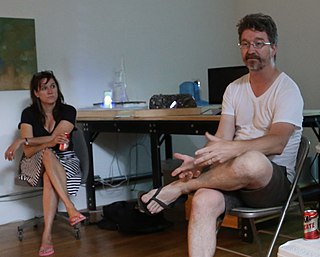
Jennifer and Kevin McCoy are an artistic duo and couple based in Brooklyn, NY. They work with interactive media, film, performance and installation to explore personal experience in relation to new technology, mass media, and global commerce. The McCoys are influenced by Lev Manovich and his theories on digital culture and their work often re-examines classic cinema, science fiction, or television through sculptural objects, net art, robotic movies or live performance. They were the recipients of the Creative Capital Award in the discipline of Emerging Fields in 2002 and the Guggenheim Fellowship in 2011. In 2014, Kevin collaborated with Anil Dash to co-create Monegraph, short for “monetized graphics.” The work "Quantum", was included in Sotheby's "Natively Digital: A Curated NFT Sale" in June 2021.

Hannah Wilke (born Arlene Hannah Butter; was an American painter, sculptor, photographer, video artist and performance artist. Her work is known for exploring issues of feminism, sexuality and femininity.
Philippe Parreno is a French contemporary artist, living and working in Paris. His works include films, installations, performances, drawings, and text.

Shirazeh Houshiary is an Iranian-born English sculptor, installation artist, and painter. She lives and works in London.
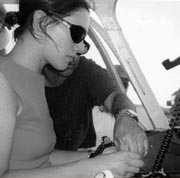
Sarah Morris is an American and British artist. She lives in New York City in the United States.
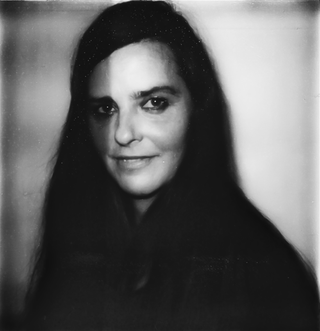
Rineke Dijkstra HonFRPS is a Dutch photographer. She lives and works in Amsterdam. Dijkstra has been awarded an Honorary Fellowship of the Royal Photographic Society, the 1999 Citibank Private Bank Photography Prize and the 2017 Hasselblad Award.

Roni Horn is an American visual artist and writer. The granddaughter of Eastern European immigrants, she was born in New York City, where she lives and works. She is currently represented by Xavier Hufkens in Brussels and Hauser & Wirth. She is openly gay.

Maman (1999) is a bronze, stainless steel, and marble sculpture in several locations by the artist Louise Bourgeois. The sculpture, which depicts a spider, is among the world's largest, measuring over 30 ft high and over 33 ft wide (9.27 x 8.91 x 10.24 metres). It includes a sac containing 32 marble eggs and its abdomen and thorax are made of rubbed bronze.
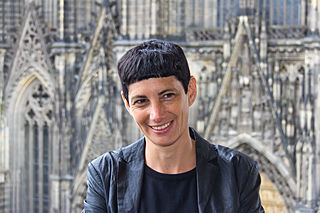
Yael Bartana is an Israeli artist, filmmaker and photographer, whose past works have encompassed multiple mediums, including photography, film, video, sound, and installation. Many of her pieces feature political or feminist themes.

Shilpa Gupta is a contemporary Indian artist based in Mumbai, India. Gupta's artistic practise encompasses a wide range of mediums, including manipulated found objects, video art, interactive computer-based installations, and performance.
Koo Jeong A is a South-Korean born mixed-media and installation artist.
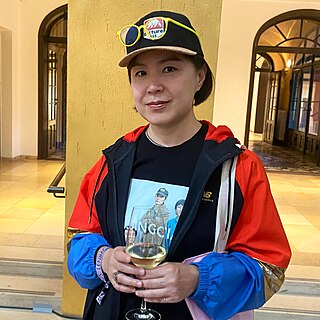
Cao Fei is a Chinese multimedia artist born in Guangzhou. Her work, which includes video, performance, and digital media, examines the daily life of Chinese citizens born after the Cultural Revolution. Her work explores China's widespread internet culture as well as the borders between dreams and reality. Cao has captured the rapid social and cultural transformation of contemporary China, highlighting the impact of foreign influences from the United States and Japan.

Ali Cherri is a Lebanese artist working in video and installation. His varied practice focuses on documenting and presenting heritage and environment in Lebanon and other Middle Eastern countries.

